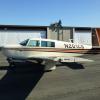How much ice?
-
Members Online
- MB65E
- hammdo
- EricJ
- TCC
- Paul Thomas
- larryb
- Max Clark
- Sirkev
- pinkiedog64
- OR75
- Skyland
- Brandt
- Jeff Uphoff
- eman1200
- affricate
- Bolter
- PaulM
- TangoTango
- Dammit Bill
- kortopates
- ElkoRandy20J
- MikeOH
- Scott Ashton
- 47U
- tperkins92
- Yourpilotincommand
- Jakes Simmons
- ArtVandelay
- Fix
- gabez
- Planegary
- PeterRus
- ohdub
- 201Mooniac
- Garmin Aviation Team
- donkaye, MCFI
- Marc_B
- akb3
- Old Chub
- N201MKTurbo


Recommended Posts
Join the conversation
You can post now and register later. If you have an account, sign in now to post with your account.